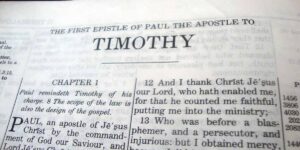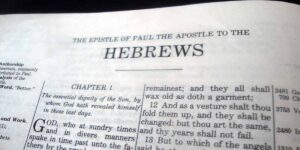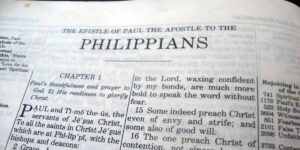Last Updated on May 7, 2023 by David H Mercer
Paul and his companions were faithful to bring the gospel to the Thessalonians in the midst of persecution. The Thessalonians had only recently become Christians, and yet they had remained faithful to the Lord, despite the fact that the apostles were not with them. Others have been faithful in bringing God’s Word to us. We must remain faithful and live in the expectation that Christ will return at any time.
Writer of First Thessalonians
Written by the apostle Paul, in the company of Silvanus (Silas) and Timotheus (Timothy) (1 Thessalonians 1:1). The vocabulary, style, and thought of the Thessalonian correspondence are genuinely Pauline. Both letters bear his name as author and were most likely written from Corinth.
Date Written
Time and place are uncertain. It is generally thought that this was the earliest of Paul’s epistles and was probably written from Corinth between 49 and 54 A. D.
To Whom Written
To the “ekklesia of the Thessalonians” (1 Thessalonians 1:1).
Purpose of First Thessalonians
The purpose of the book of First Thessalonians was to encourage the leadership in Thessalonica to urge the believers to stand fast in the persecution they were facing, even as Paul had heard from Timothy that they had done. Paul also dealt with several problems among them such as sexual immorality and the way they were grieving over those who had died in the persecution.
Historical Setting of First Thessalonians
Paul founded the church at Thessalonica in A.D. 49 or 50 during his second missionary journey (Acts 17:1-9). The church consisted of a few Jewish converts and a larger number of former pagans (1 Thessalonians 1:9; Acts 17:4). Desiring not to handicap the young church, Paul worked at his own job as a tent maker – and at some sacrifice to himself, he adds (1 Thessalonians 2:7-12) – twice receiving aid from the ever faithful Philippians (Philippians 4:6).
Paul’s stay in Thessalonica was cut short, however, when the Jews gathered some local troublemakers and an uproar broke out; Paul was escorted out of town, leaving Timothy to patch up the work (Acts 17:1-15). Separated so suddenly from the infant church, Paul describes his feelings as one who had been “orphaned” (Greek text, 1 Thessalonians 2:17).
Once he was safe in Athens, Paul sent Timothy (who apparently had since rejoined him) back to Thessalonica to strengthen and encourage the believers. When Timothy returned to Paul, who had since moved on to Corinth (Acts 18:1-5), he brought news of the love and faith of the Thessalonians. In response to Timothy’s encouraging report, Paul wrote the first epistle to Thessalonica. Evidently, the Thessalonians were unsettled over the second coming of Christ, because Paul discusses the issue in the subsequent letter as well.
Theological Contribution
Paul writes the epistle in the spirit of a true pastor. He is overjoyed with their enthusiastic response to the gospel and longs for the day when they will stand with him in the presence of the Lord Jesus.
He compares himself to a nursing mother caring for her children and to a father working on behalf of his family. He gives himself body and soul to the Thessalonians and dares to hope that they will give themselves likewise to God.
Special Consideration
On the subject of the Second Coming, Paul assumes the Thessalonians what will happen, but not when it will happen. The end, however, will follow widespread rebellion and abandonment of the faith. Paul appeals for them to be level headed during the time of trouble and warns Christians not to despair when they see the Antichrist pretending to be God.
Click here to download or print the Bible outline “First Thessalonians – Holiness in Light of Christ’s Return“.








